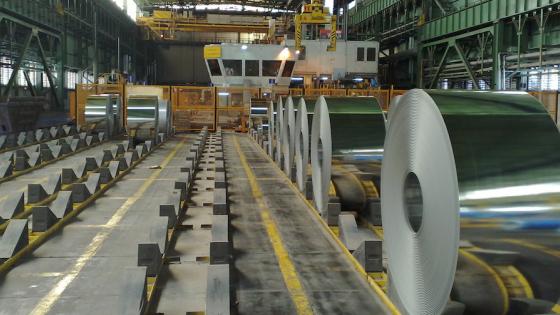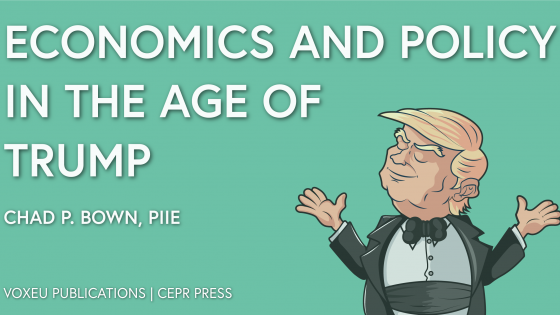First posted on:
Trade and Investment Policy Watch, 18 June 2018.
After weeks of on-again off-again threats, the Trump administration on 15 June produced its list of specific Chinese products on which it soon plans to impose tariffs. The newly announced tariffs will almost exclusively attack intermediate inputs and capital equipment that US companies import to remain competitive in the global marketplace. The major new addition to the tariff list is semiconductors.
Overall, the Trump administration’s proposed 25% tariffs would cover over $46 billion of imports from China in 2017. Tariffs covering nearly 70% of those imports – or $32 billion – would go into effect on 6 July 2018. Tariffs over the remaining $14 billion are subject to a short public review and comment period and may go into effect shortly thereafter. China plans to retaliate on an almost equivalent amount of US exports, mostly US agricultural products, as soon as Trump’s tariffs go into effect.
One conclusion based on the latest information is clear. The decision to impose these tariffs will raise prices for US consumers. Because the targeted products are intermediate inputs and capital equipment, the most adversely affected businesses are US-based companies dependent on imports from China to produce goods with US-made inputs sold competitively in the US and around the world. Also undercutting the rationale for these latest actions, China stands to lose very little Chinese value-added content from retaliating against the US exports it has chosen. US workers, ranchers, and farmers will largely bear the costs of China’s tariffs associated with lost agricultural sales.
Complete list of imports from China subject to Trump’s 25% tariffs
The 15 June announcement features two lists of products over which the Trump administration plans to impose 25% tariffs. Combined, the lists consist of 1,102 products and cover $46.3 billion of imports from China in 2017.
Figure 1a breaks down the products subject to the new tariffs. Overall, 95% of the products are intermediate inputs or capital equipment. Relative to the initial list proposed by the Office of the US Trade Representative on 3 April 2018, coverage of intermediate inputs has been expanded considerably (Figure 1b).

Figure 1a US imports from China subject to Section 301 tariffs, by producttype, 15 June lists
Source: USITC Dataweb.

Figure 1b US imports from China subject to Section 301 tariffs, by product type, 3 April
Source: USITC Dataweb.
Most of the products on the initial list are still subject to Trump’s tariffs. That list consisted of 1,333 products and covered $46.2 billion of US imports from China in 2017. But the public pushed back considerably during hearings on 15-17 May 2018, explaining the costs to US economic interests.[1]In the end, 818 of the original 1,333 products remained on the list, totalling $32 billion of imports. Tariffs on these products are scheduled to go into effect on July 6, 2018.
Semiconductors and other products added
The 15 June list contains 284 additional products that would also be subject to 25% tariffs, totalling $14 billion in imports in 2017. Overall, 98% of newly added products are intermediate inputs and capital equipment.
Figure 2a illustrates the main added products. Top added products are semiconductors ($3.6 billion) and plastics ($2.2 billion), as well as other intermediate inputs and capital equipment. Semiconductors are found in consumer products used in everyday life such as televisions, personal computers, smartphones, and automobiles.

Figure 2a US imports from China subject to Section 301 tariffs added to list on 15 June
Source: Authors' calculationsusing US import data from USITC Dataweb. Industry categories are defined use Harmonized System sections as follows: Semiconductors (8541,8542) and Plastics (29).

Figure 2b US imports from China dropped from original April 3 Section 301 list on 15 June
Source: Authors' calculations using US import data from USITC Dataweb. Industry categories are defined use Harmonized System sections as follows: TV and flat panel screen (8528) and Aluminium (76).
Televisions, aluminium, steel, and other products removed from 3 April list
The Trump administration dropped 515 products from the 3 April list, totalling $14 billion in imports in 2017, most of which are consumer goods, including colour televisions and flat panel screens ($4.5 billion), as illustrated in Figure 2b. Aluminium ($1.3 billion) was also dropped; aluminium imports are subject to President Trump’s 10% tariffs under Section 232 of the Trade Expansion Act of 1962 imposed on 23 March 2018. Also dropped were number of steel products subject to President Trump’s 25% tariffs under Section 232 of the Trade Expansion Act of 1962 on 23 March 2018.
China’s proposed retaliation
Shortly after the Trump administration’s announcement on 15 June, the Chinese government issued its own list of US exports over which it planned to impose 25% tariffs, with timing in lockstep with the US tariffs. The list covers $44.9 billion of US exports to China in 2017. Roughly $29.6 billion will be subject to an additional 25% tariff starting 6 July, and the remaining $15.4 billion will be subject to 25% tariffs at a later time, subject to further notice.
The list and timing broadly follow the Chinese government’s reaction to the Trump administration’s April tariff announcement. On 4 April, the Chinese government responded to the Trump administration’s $46 billion 3 April tariff list by announcing its intention to impose 25% tariffs on nearly $50 billion of US exports in 2017, should the administration’s 3 April tariffs go into effect.
China has made some changes to its retaliation list of 15 June relative to that published in April. Soybeans, which accounted for $12.4 billion of US exports, remained subject to tariffs. But China has added agricultural and food products, including $1.2 billion of fish and crustaceans, $0.5 billion of pork, $0.5 billion of fruits and nuts, and $0.4 billion of dairy products to the list with tariffs effective 6 July. Of the newly added agriculture products, pork and fruits and nuts are already covered by China’s retaliatory tariffs to the US Section 232 measures, subject to tariffs of 25% and 15%, respectively.
China also added $4.4 billion of petroleum products and $1.6 billion of medical equipment to the list that is pending, subject to the Trump administration’s second list of tariffs going into effect. Aircraft – which accounted for $16.3 billion of US exports to China in 2017 – were taken off the list.
Economic costs of the Trump administration’s actions
Research by Mary Lovely and Yang Liang finds many of the products being targeted for tariffs are imports deriving from US-based and non-Chinese-based multinationals. This means that US value added or value added from US allies will suffer losses, including those who have done the research and development, as well as many who manufactured other subcomponents embedded in the imports from China. Non-Chinese producers of this content – no longer to be sold competitively in the US market – are thus also going to bear the brunt of these tariffs.
The Trump administration has noted some reasonable concerns in the Section 301 report regarding elements of China’s “Made in China 2025” industrial policy. Unfortunately these tariffs are not the solution. No negotiations are taking place, and even companies that are not suffering yet from China’s mistreatment will soon be hurting because of these tariff-induced higher costs.
Endnote
1. See Section 301 Hearing transcripts, available at https://ustr.gov/issue-areas/enforcement/section-301-investigations










